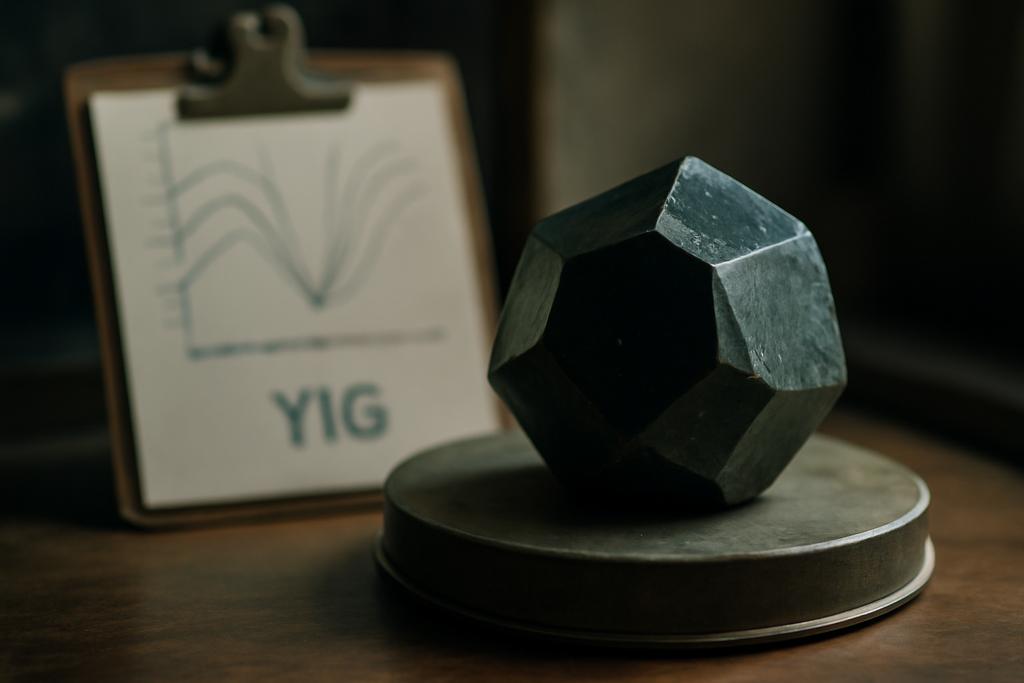The humble yttrium iron garnet (YIG), a seemingly simple magnetic material, has just revealed a surprising secret: its magnetization follows a universal scaling law, challenging long-held assumptions in physics. This unexpected discovery, detailed in a new paper from the University of Vienna and the Weizmann Institute of Science, is reshaping our understanding of how magnetic materials behave.
The Unexpected Normalcy of YIG
For decades, physicists have understood the magnetization of simple ferromagnets like EuO and EuS to follow an “anomalous” scaling law. As temperature increases towards the Curie point (the temperature at which the material loses its magnetism), their magnetization decreases in a specific way, with a scaling exponent of roughly 1/3. This was considered a well-established characteristic. But the new research, led by Rostyslav O. Serha, Anna Pomyalov, Andrii V. Chumak, and Victor S. L’vov, turns this understanding on its head.
YIG, however, is a different beast. It’s a ferrimagnet—a material with multiple magnetic sublattices arranged in a complex, antiparallel fashion—making its behavior considerably more intricate. The researchers found that YIG’s magnetization, as it approaches the Curie temperature, follows a much simpler, “normal” scaling law, proportional to the square root of the difference between the Curie temperature and the current temperature. This “normal” scaling, predicted by the mean-field approximation, surprisingly held true across almost the entire temperature range, from near absolute zero to the Curie point.
This deviation from the expected “anomalous” behavior is a significant puzzle. It suggests that the complexity of YIG’s multi-sublattice structure somehow simplifies its overall magnetization behavior, a stark contrast to the simple ferromagnets previously studied.
A Unified Theory
To explain this unexpected finding, the researchers developed a novel theoretical framework. They didn’t start from scratch but cleverly combined two established models: the mean-field approximation (MFA), excellent for describing behavior near the Curie temperature, and the spin-wave approximation (SWA), accurate for low temperatures.
The brilliance lies in the synthesis. Neither MFA nor SWA alone could capture the full behavior of YIG’s magnetization across all temperatures. The new model acts as a bridge, incorporating the strengths of both into a unified approach. The model precisely accounts for the multiple magnon (spin wave) branches in YIG, a feature absent in previous models.
The result is a single equation that describes the magnetization’s temperature dependence with remarkable accuracy, needing only a single tuning parameter. The researchers call this the “SW-MFA minimal model.”
Why This Matters
This research is not just an esoteric theoretical exercise. YIG is a cornerstone material in modern magnonics—a rapidly developing field focused on using spin waves (magnons) to process information. Understanding YIG’s magnetization is crucial for pushing the boundaries of magnonic devices.
The new theoretical model provides a more precise way to design and optimize magnonic components and circuits. This understanding is also important for developing other high-tech applications that use magnetic materials, improving efficiency and performance.
Beyond YIG
The implications extend beyond YIG. The researchers suggest that the unified SW-MFA minimal model could be applied to a wide range of multi-sublattice magnetic materials. This is a powerful tool for understanding and predicting the behavior of complex magnetic systems that were previously far more challenging to analyze.
The team’s work opens doors to explore other materials with similar complexities, potentially revealing further surprising phenomena. This research is an example of how a seemingly well-understood field can suddenly reveal unexpected subtleties, forcing us to refine our theories and expand our understanding of the physical world.










